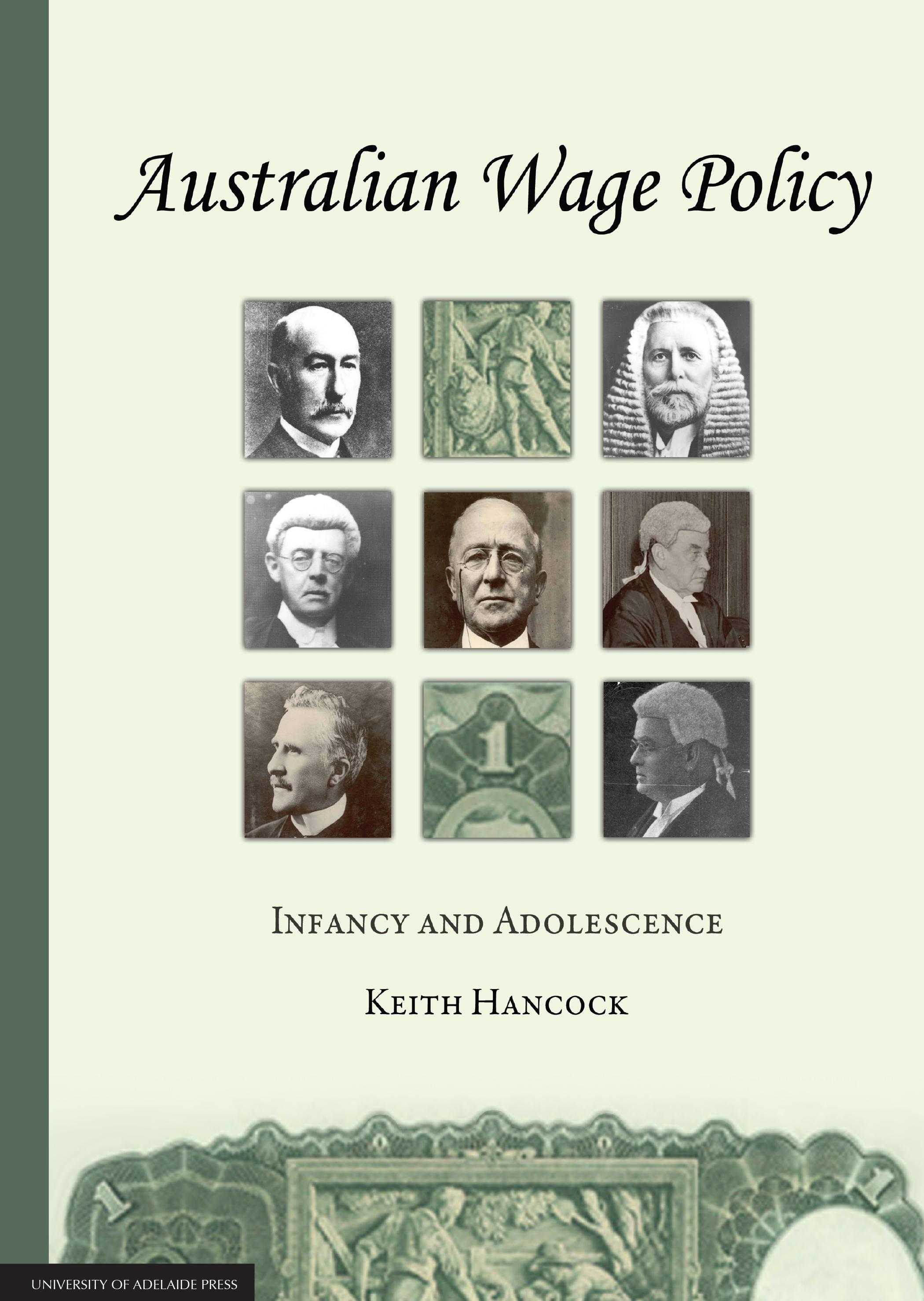Australian Wage Policy

Infancy and Adolescence
FREE | 2013 | Ebook (PDF) | 978-1-922064-46-2 | 750 pp
DOI: https://doi.org/10.20851/wage-policy
The advent of industrial regulation by tribunal came close to the turn of the century. Wages boards began in Victoria in 1896 and courts of arbitration in 1900.
The first day of the new century was also the first day of the Commonwealth of Australia, endowed with a Parliament that was empowered to institute its chosen models of conciliation and arbitration for the prevention and settlement of interstate industrial disputes.
This book is a study of the operation of conciliation and arbitration, especially by the Commonwealth Court of Conciliation and Arbitration, from the inception of the system until World War II. It is not, however, a general history of conciliation and arbitration.
It does not, for example, deal with the successes and failures of the tribunals in preventing strikes and lockouts; or with the manifold legal issues to which the system gave rise, unless they affected significantly the tribunals’ exercise of their power to fix wages and conditions.
Rather, it is about fixing the terms of employment; and it attempts to set the tribunals’ performance in an economic context. It is about ‘wage policy’, if the term is interpreted broadly enough to include both prescribed wages and other factors that affect the cost of labour, including working hours and leave.
About the author
Keith Hancock was a Lecturer in Economics at the University of Adelaide and at Flinders University, where he still holds honorary appointments. In 1980, he became Vice-Chancellor of Flinders University. In 1987 he became a Presidential Member of the Australian Conciliation and Arbitration Commission (later the Australian Industrial Relations Commission). He was one of the founders of the Industrial Relations Society of South Australia. He also founded the Flinders University (later the National) Institute of Labour Studies. Hancock is a Fellow and former President of the Academy of the Social Sciences in Australia. He has served as President of the Industrial Relations Society of Australia and the Economic Society of Australia (South Australian Branch).
Reviews
'A work of this nature has until now been generally regarded as too great a challenge, too inscrutable a matter to deal with in any comprehensive way, too mysterious in its many parts to give adhesion or structure to. All those things have a real element of truth. But the challenge has now been brilliantly overcome by one of the very few scholars who could possibly do it using in all cases primary sources. As such a great gap in our history has been filled.'
His Hon. Judge Peter McCusker, in launching the book.
'Keith Hancock has provided an exhaustive and fascinating account of wages policy in just over 700 pages. Despite the sheer volume of detail which is covered by the book, it is remarkably easy to read and is written in clear prose which is accessible to those readers without a background in economics. Perhaps the most significant lesson which emerges from the book is that the issues at the heart of the debate over wage policies remain as relevant today as they were during the first four decades of the Commonwealth of Australia.'
Russell Lansbury, University of Sydney, in The Economic and Labour Relations Review, 24 (4)
